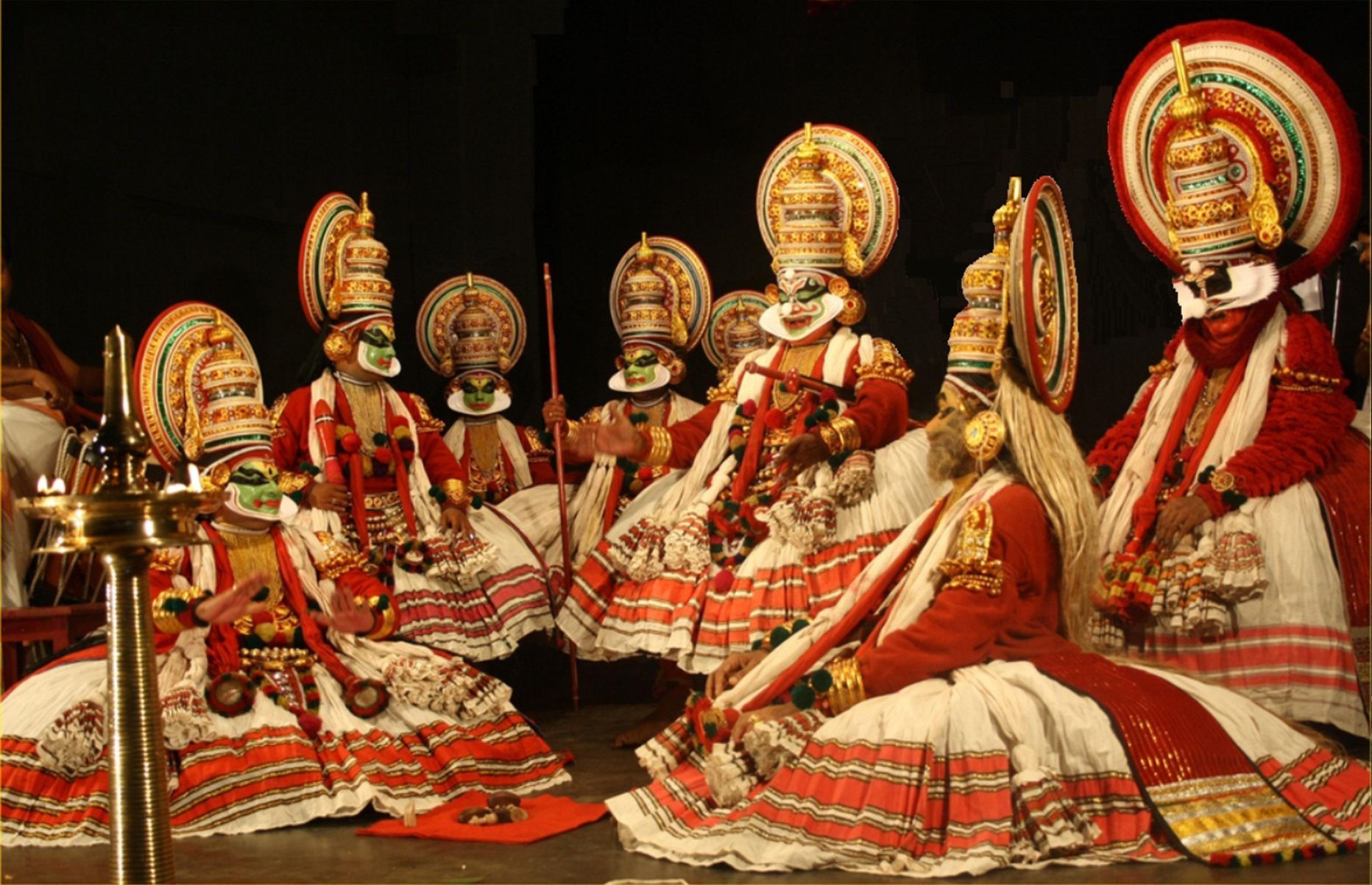Kathakali and Bharatanatyam: Dance as an Artistic Expression

India’s classical dance forms have long been revered as expressions of spirituality, emotion, and cultural storytelling. Among the most prominent are Kathakali and Bharatanatyam, two ancient dance-drama traditions that have captivated audiences with their intricate movements, expressive gestures, and deep-rooted cultural significance. Although they originate from different regions of India, both dance forms are theatrical, emotionally charged, and visually stunning, offering a window into India’s rich mythology and artistic heritage.
1. Kathakali: The Majestic Dance-Drama of Kerala
Kathakali, which translates to "story-play", is a highly stylized classical dance form that originated in the southern state of Kerala. It is characterized by its exaggerated facial expressions, intricate hand gestures, elaborate costumes, and vibrant makeup. Kathakali is a narrative dance that typically depicts mythological stories, drawn mostly from Hindu epics like the Ramayana and Mahabharata.
A. Origins and Development
Kathakali evolved in the 16th century as a blend of traditional dance, music, and theatrical performance. It emerged from Ramanattam, a dance-drama form associated with temple rituals, and Krishnattam, a style devoted to the depiction of Lord Krishna’s life. Over time, Kathakali grew more elaborate, incorporating dramatic facial expressions (called "mudras") and refined hand gestures to convey complex emotions and storylines.
B. Characteristics of Kathakali
- Expressive Makeup and Costumes: One of Kathakali’s defining features is its vivid makeup, which signifies the character’s nature and personality. The faces of actors are painted in a way that distinguishes between gods, demons, and heroic figures. Bright colors, exaggerated facial features, and ornate costumes add to the dramatic impact.
- Facial Expressions (Abhinaya): Kathakali’s facial expressions are essential to the art form. Each expression, conveyed through eye movements and intricate facial muscle control, tells a story. The ability to portray anger, joy, sorrow, or surprise through facial nuances is central to the performance.
- Hand Gestures (Mudras): The use of specific hand gestures is vital to the storytelling process. With over 80 mudras, each gesture conveys a particular action, object, or emotion. These gestures are the primary means of communication in Kathakali, making it a silent but visually expressive art form.
- Music and Drums: Kathakali is accompanied by traditional Carnatic music, with the chenda drum being central to the performance. The beats of the chenda are used to indicate rhythm and to enhance the drama, while the vocalists narrate the story through chanting and singing.
2. Bharatanatyam: The Classical Dance of Tamil Nadu
Bharatanatyam is one of India’s oldest and most well-known classical dance forms. Originating in the temples of Tamil Nadu, Bharatanatyam was traditionally performed as an offering to the gods and was practiced by devadasis (temple dancers). Today, it has evolved into a highly technical solo performance art celebrated worldwide for its grace, precision, and deep spiritual connection.
A. Origins and Development
Bharatanatyam dates back over 2,000 years and was formalized as a classical dance form in the 15th century under the guidance of the Tanjore court in Tamil Nadu. It has roots in Natya Shastra, the ancient Indian treatise on performing arts, which outlined the importance of expressions, rhythms, and gestures in dance.
B. Characteristics of Bharatanatyam
- Adavus (Basic Steps): Bharatanatyam is known for its rigorous footwork and precise movements. The basic steps, known as adavus, form the foundation of this dance. The dancer’s control over rhythm and body position is emphasized, with movements being both graceful and energetic.
- Mudras and Abhinaya: Like Kathakali, Bharatanatyam makes extensive use of hand gestures (mudras) to convey meaning. However, in Bharatanatyam, facial expressions (abhinaya) play a key role in expressing emotions. Through eye movements, lip sync, and facial muscles, the dancer narrates the story or conveys emotions such as devotion, love, longing, or anger.
- Costumes and Jewelry: Bharatanatyam costumes are elaborate, with the dancer wearing a sari-like dress, complete with jewelry, bells on the ankles (ghungroos), and a special hairstyle adorned with flowers. The attire is designed to enhance the aesthetic beauty of the dance and facilitate movement.
- Rhythm and Music: Bharatanatyam is accompanied by Carnatic music and is known for its complex rhythms and timing. The rhythmic patterns, called tala, form the backbone of Bharatanatyam. The dancers’ movements align perfectly with the beats, creating a harmonious synchronization between the music, rhythm, and dance.
3. Commonalities and Differences
While Kathakali and Bharatanatyam have distinct regional and stylistic differences, both share certain key elements:
- Both are Storytelling Forms: At their core, both Kathakali and Bharatanatyam are forms of narrative dance. Kathakali often depicts epic mythologies, while Bharatanatyam conveys devotional themes or stories from Hindu mythology.
- Expression as Central Element: Both forms emphasize the use of expression and gestures to communicate emotions and stories. Kathakali’s dramatic facial expressions and Bharatanatyam’s abhinaya are crucial in narrating the tale, even in the absence of dialogue.
- Traditional Roots: Both dance forms have religious origins and were historically performed in temples as a form of devotion and spiritual expression.
However, there are several differences:
- Dance Form: Kathakali is a group performance that involves elaborate costume changes, drama, and acting, whereas Bharatanatyam is often performed as a solo dance that highlights intricate footwork and stylized movements.
- Costumes and Makeup: The makeup in Kathakali is bold and extravagant, distinguishing characters such as demons or gods, while Bharatanatyam’s costume is more subtle, emphasizing the elegance and grace of the dancer.
Both Kathakali and Bharatanatyam are integral parts of India’s classical dance heritage, showcasing the country’s rich cultural traditions and deep spirituality. Through graceful movements, expressive gestures, and dramatic storytelling, these dance forms continue to be celebrated and performed worldwide. While Kathakali brings to life the colorful stories of Kerala, Bharatanatyam enchants with its timeless elegance and devotion. Together, they highlight the vast diversity and enduring beauty of Indian classical dance.